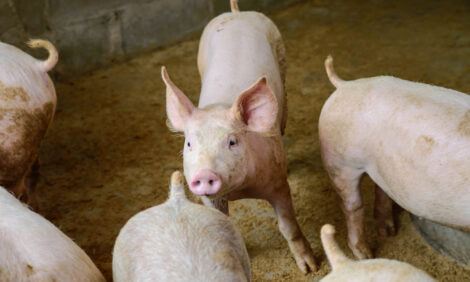



Weekly Overview: US Hog Inventory and Pig Crop Tumble Five Per Cent
GLOBAL - Just a week before the Fourth of July Independence Day celebrations, lower inventories of hogs and pigs in the US have been recorded, likely related to the mortalities from porcine epidemic diarrhoea (PED). However, pig prices are expected to remain high for the rest of the year. Combined with expected lower feed prices, US producers are looking at a very profitable 2014. A similar situation is reported in Mexico. Latvia has become the third EU state to report African swine fever.The inventory of all hogs and pigs in the United States on 1 June 2014 was 62.1 million head - five per cent lower than on the same date last year and down one per cent from 1 March 2014.
At 5.85 million head, the breeding herd inventory was down slightly from last year but slightly higher than the previous quarter.
Market hog inventory, at 56.3 million head, was five per cent lower than 12 months previously and down one per cent from last quarter.
The March-May 2014 pig crop, at 27.4 million head, was down five per cent from 2013. Sows farrowed during this period totalled 2.80 million head, down slightly from 2013. The average pigs saved per litter was 9.78 for the March-May period, compared to 10.31 last year.
In Mexico during the second half of 2014, pig slaughter prices are forecast by Genesus to remain at the same level as the first half of the year.
Crops are expected to be good to excellent and so grain and feed prices are not expected to change either.
There has been a sharp reduction in new outbreaks of PED but there are some shortages of pigs resulting from losses resulting from the virus in the first six months of the year.
At the International Pig Veterinary Society Congress and Mexican Pig Veterinary Society (AMVEC) Congress in Cancun recently, the Undersecretary of Livestock of the Secretary of Agriculture said that the pig industry will grow by 3.4 per cent during 2014, which means 30,000 sows. Genesus expects the increase to be nearer to 7.5 per cent.
African swine fever has been reported for the first time in Latvia in the last week, making it the third EU member state to be affected by the virus. A total of five wild boar and three domestic pigs have been confirmed as infected in two regions, both close to the border with Belarus.
And finally, turning to news of porcine epidemic diarrhoea, the number of virus-positive accessions in the US has increased by just 98 in the most recent week recorded, and the reporting authority has corrected a previous statement about a first case in Arkansas, so the number of states affected has returned to 30.








